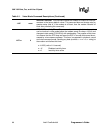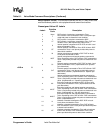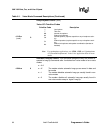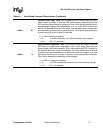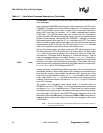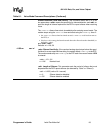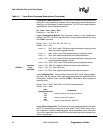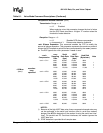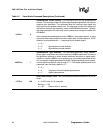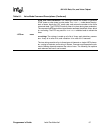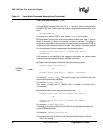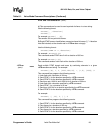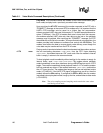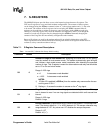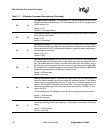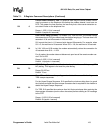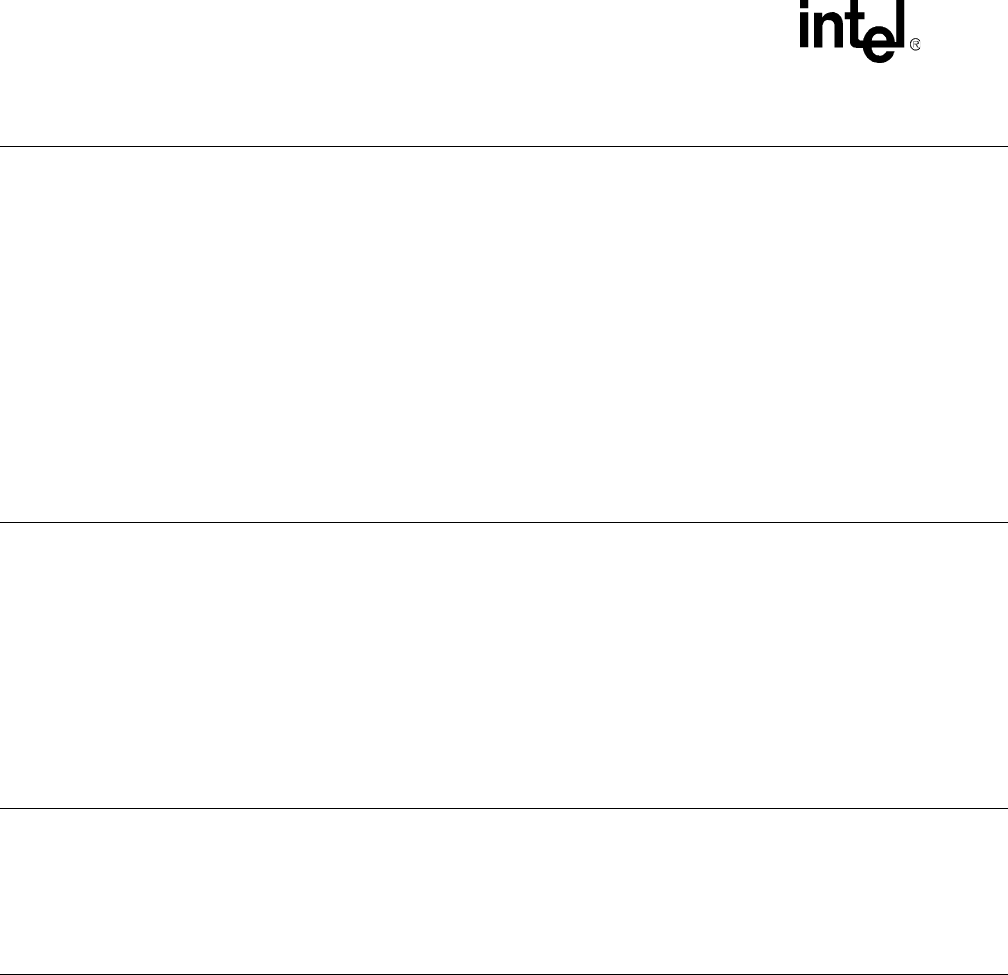
56K V.92 Data, Fax, and Voice Chipset
96 Intel Confidential Programmer’s Guide
+VSP=n 0
Speakerphone On/Off Control: This command turns on the speakerphone
function. This feature provides full-duplex speakerphone capabilities with internal
adaptive echo cancellers. This command takes the received voice signal and
loops it back to the analog transmit pins. The host must configure the relays and
microphone interface as necessary using the AT+VLS=n command. Typically,
this means setting the off-hook relay driver, speaker, and microphone inputs with
AT+VLS=7.
After enabling the speakerphone mode (+VSP=1), the modem remains in voice
command mode and provides information about local off-hook detection, DTMF
detection, and tone detection — if supported by the modem board.
n = 0, 1
n = 0* Speakerphone mode disabled
n = 1 Speakerphone mode enabled
#VSPS=n 1
Speakerphone Type Selection: This command determines which speaker-
phone type is used when the modem receives a +VSP=n command. This allows
the application software to select whether telephone emulation or digital speak-
erphone is used for +VSP=n. Upon powering-up, the modem determines wheth-
er it can support a digital speakerphone mode. If digital speakerphone is support-
ed, then the factory default value is equal to “1”. If the digital speakerphone is not
supported, then the factory default is “0”.
n = 0, 1
n = 0 Telephone Emulation Mode speakerphone
n = 1* Digital speakerphone
+VTD=n 100
Beep Tone Duration Timer: This command sets the default duration of all DTMF
tones.
n = 5–255 (units of 0.01 seconds)
Default: n = 100
n = 100* Default value (1 second)
Table 6-1. Voice Mode Command Descriptions (Continued)



